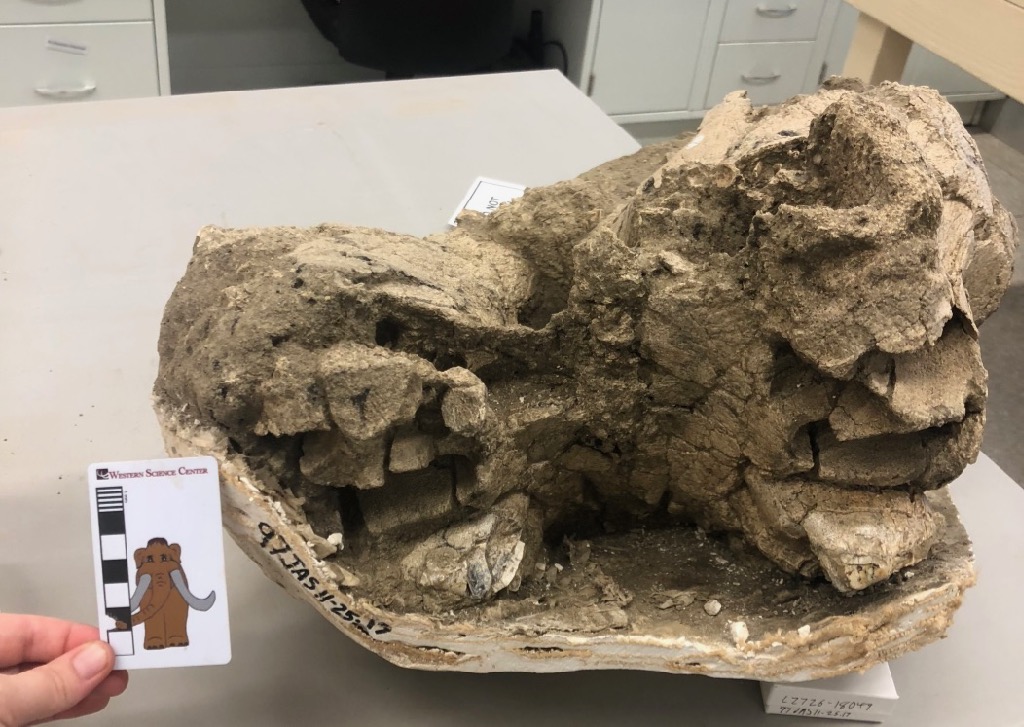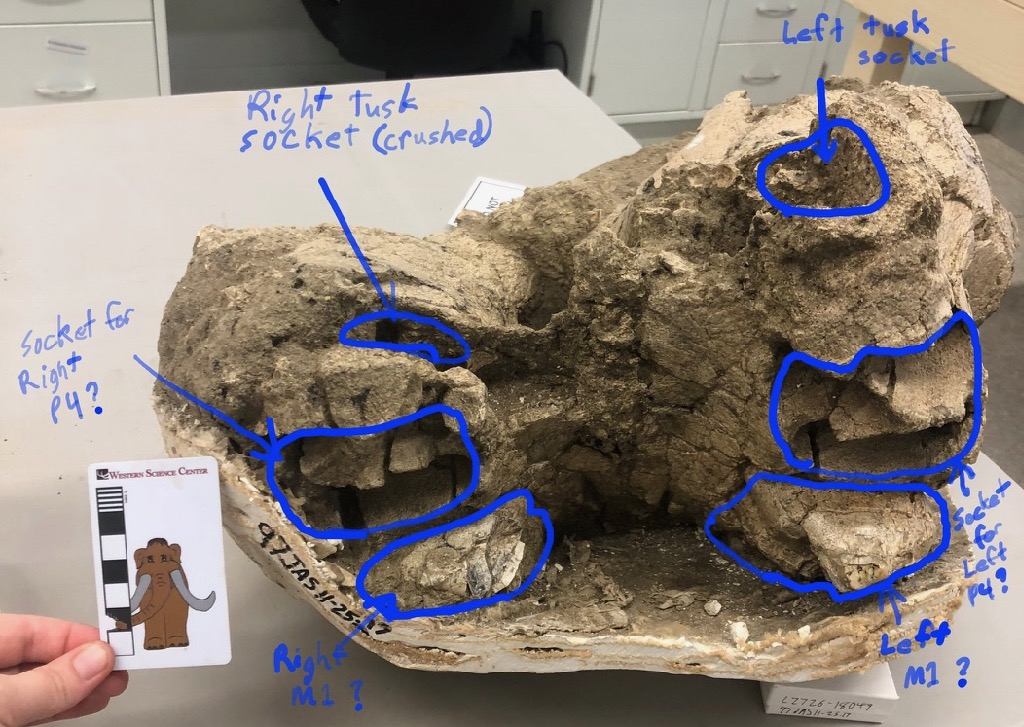 We haven't talked much about mastodons on the blog lately, but that doesn't mean they've been forgotten. We've been doing a lot of work scanning, measuring, and otherwise documenting the mastodons in our collection, and we're doing additional preparation work on some of them. The specimen featured in this week's post was moved into our preparation lab a few days ago for additional work.This may seem at first glance like a nondescript lump of bone, but it's actually a fairly significant amount of a small mastodon skull. This is an unusual view, looking head-on almost straight into the mouth. Below is an annotated version:
We haven't talked much about mastodons on the blog lately, but that doesn't mean they've been forgotten. We've been doing a lot of work scanning, measuring, and otherwise documenting the mastodons in our collection, and we're doing additional preparation work on some of them. The specimen featured in this week's post was moved into our preparation lab a few days ago for additional work.This may seem at first glance like a nondescript lump of bone, but it's actually a fairly significant amount of a small mastodon skull. This is an unusual view, looking head-on almost straight into the mouth. Below is an annotated version: So we actually have nearly the entire palate of this animal, as well as the tusk sockets. Unfortunately, we can't see the teeth clearly because obscured by the plaster jacket, which is why we've moved this into the lab. We're going to try removing the jacket and cleaning the ventral side of the skull. That should enable us to determine if the preserved teeth are in fact the first molars (as suggested in the annotation), or whether they're actually the second molars.Determining the identification of this tooth has broad implications for this specimen. If you noticed the scale bar, you might have realized that this is a very small skull for a mastodon. If the tooth is the 1st molar, that means this mastodon was only about 14-15 years old, a young adolescent. But if it's the 2nd molar, it means that the mastodon was more like 27-28 years old, a full grown adult. To be that small at that age, this would have to be a female (male mastodons are much larger than females).Both female and juvenile mastodons are exceptionally rare from Diamond Valley Lake. In fact, whichever this specimen turns out to be, it will be the only skull from DVL in that category. So, female or juvenile? As soon as we find out, we'll let you know in a future post.
So we actually have nearly the entire palate of this animal, as well as the tusk sockets. Unfortunately, we can't see the teeth clearly because obscured by the plaster jacket, which is why we've moved this into the lab. We're going to try removing the jacket and cleaning the ventral side of the skull. That should enable us to determine if the preserved teeth are in fact the first molars (as suggested in the annotation), or whether they're actually the second molars.Determining the identification of this tooth has broad implications for this specimen. If you noticed the scale bar, you might have realized that this is a very small skull for a mastodon. If the tooth is the 1st molar, that means this mastodon was only about 14-15 years old, a young adolescent. But if it's the 2nd molar, it means that the mastodon was more like 27-28 years old, a full grown adult. To be that small at that age, this would have to be a female (male mastodons are much larger than females).Both female and juvenile mastodons are exceptionally rare from Diamond Valley Lake. In fact, whichever this specimen turns out to be, it will be the only skull from DVL in that category. So, female or juvenile? As soon as we find out, we'll let you know in a future post.
